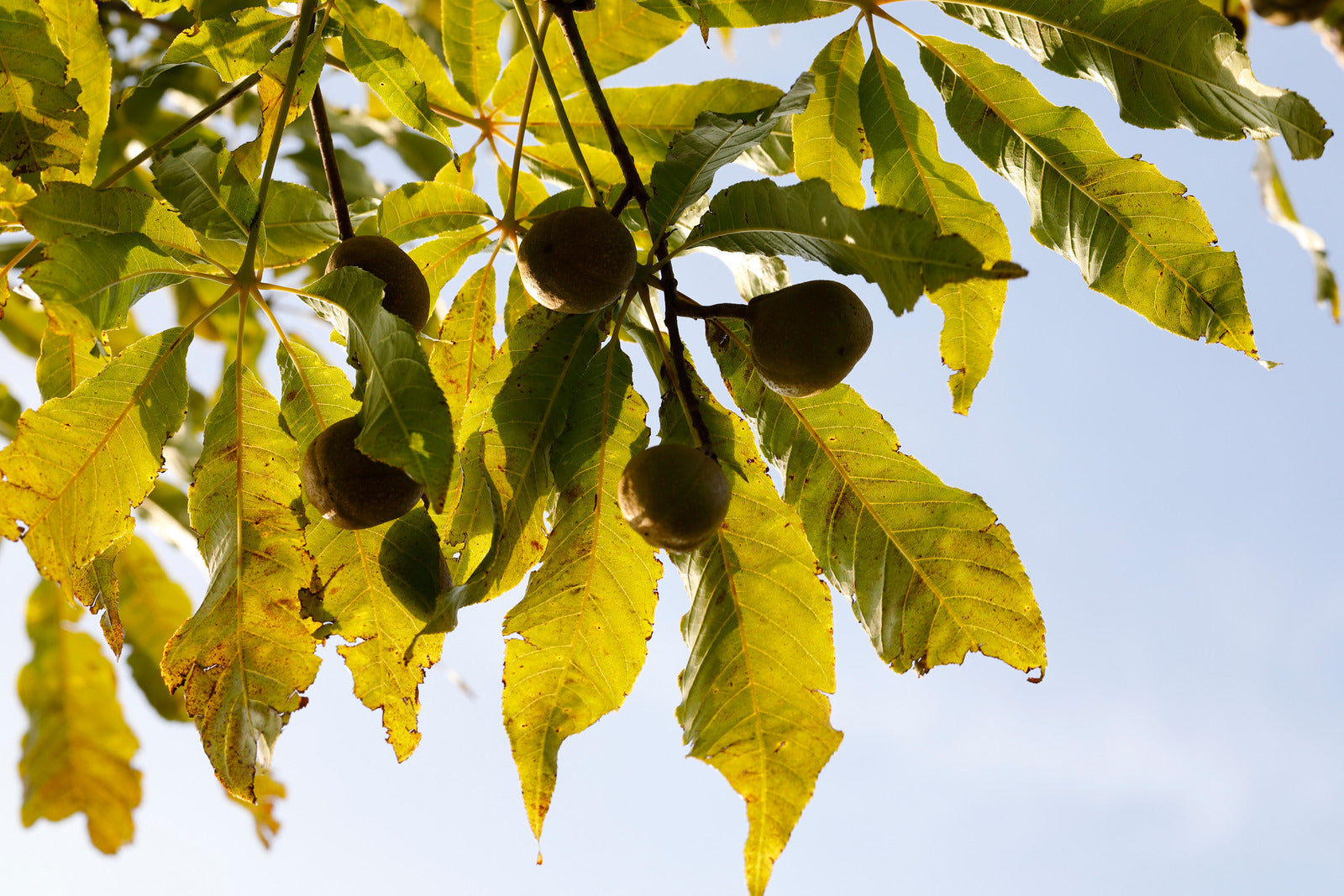AESCULUS GLABRA / OHIO BUCKEYE
- Regular price
-
$49.95 CAD - Regular price
-
- Sale price
-
$49.95 CAD
Couldn't load pickup availability
Delivery Fees
Delivery Policy
Enjoy FREE delivery on all orders over $149!
For orders between $80 and $149, a $18.99 delivery fee will apply.
Orders under $80 will be prompted to add more items to your cart.
AESCULUS GLABRA / OHIO BUCKEYE
A Majestic Tree with Striking Foliage and Beautiful Flowers
Aesculus glabra, commonly known as the Ohio Buckeye, is a native deciduous tree that brings seasonal beauty to the landscape. Its large, palmate leaves and showy yellow-green flowers in spring make it a standout in any garden or park. The Ohio Buckeye is also known for its distinctive, spiny fruit that contains seeds resembling a buck’s eye, a feature that adds to the tree’s charm.
Why Choose Ohio Buckeye?
- Unique Flowers: The tree produces large, fragrant yellow-green flower clusters in the spring, making it an eye-catching addition to your garden.
- Fall Foliage: Ohio Buckeye offers excellent fall color, with its leaves turning a rich yellow before they drop.
- Wildlife-Friendly: The tree's seeds attract wildlife, especially squirrels, who collect them for food.
- Low Maintenance: Once established, it is a relatively low-maintenance tree that adapts well to a variety of soil types.
Key Features:
- Foliage Color: Dark green leaves in summer, turning yellow in the fall.
- Flower Color: Yellow-green panicles of flowers in spring.
- Height and Spread: Typically grows 30–50 feet tall with a similar spread.
- Hardiness: USDA Zones 4–8.
- Sunlight: Prefers full sun to partial shade.
- Soil Requirements: Tolerates a range of soil types, from well-drained to slightly moist.
Specifications:
- Plant Size: 30–50 feet tall, 30–50 feet wide.
- Growth Habit: Rounded canopy with large, palmate leaves.
- Hardiness: USDA Zones 4–8.
- Flowering: Produces showy, yellow-green flower clusters in spring.
- Fruit: Spiny, inedible nuts, often called "buckeyes."
Ideal Uses:
- Shade Tree: Excellent for providing shade in large lawns, parks, and gardens.
- Specimen Tree: The striking foliage, flowers, and fall color make it a standout specimen tree.
- Wildlife Habitat: The seeds attract wildlife, making it a good choice for naturalized areas.
- Mass Planting: Can be planted in groups for an impactful statement or as part of a woodland garden.
The Ohio Buckeye is a majestic tree that offers year-round beauty, from its springtime blooms to its fall foliage. With its wildlife-friendly attributes and relatively easy care, it’s a perfect addition to both urban and rural landscapes.

Care Instructions
Different plants have different watering needs. Check the soil moisture by inserting your finger about an inch into the soil. If it feels dry, water the plant until the water drains from the bottom of the pot. Avoid overwatering, as it can lead to root rot.

AESCULUS GLABRA / OHIO BUCKEYE
- Regular price
-
$49.95 CAD - Regular price
-
- Sale price
-
$49.95 CAD


